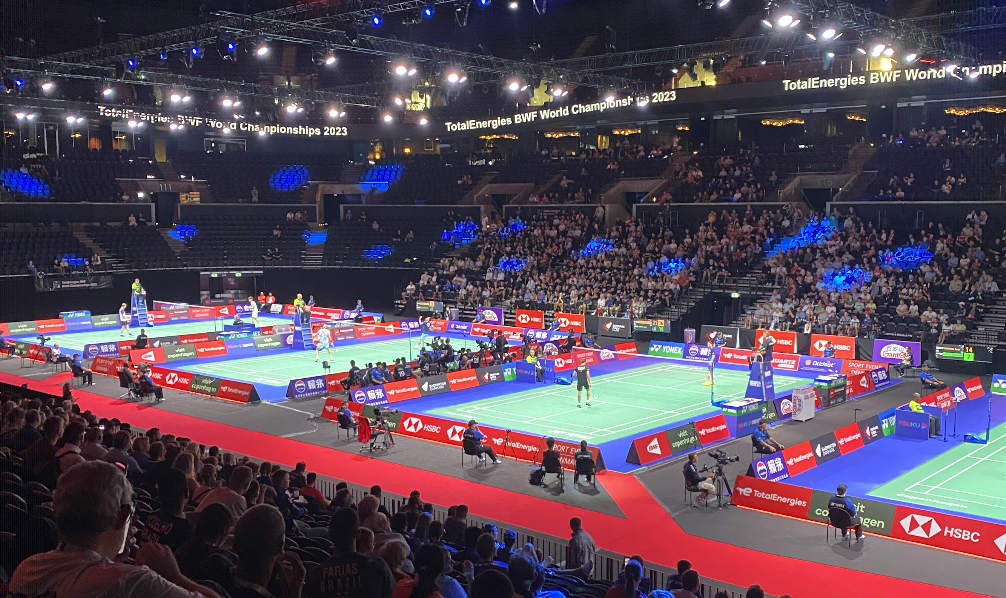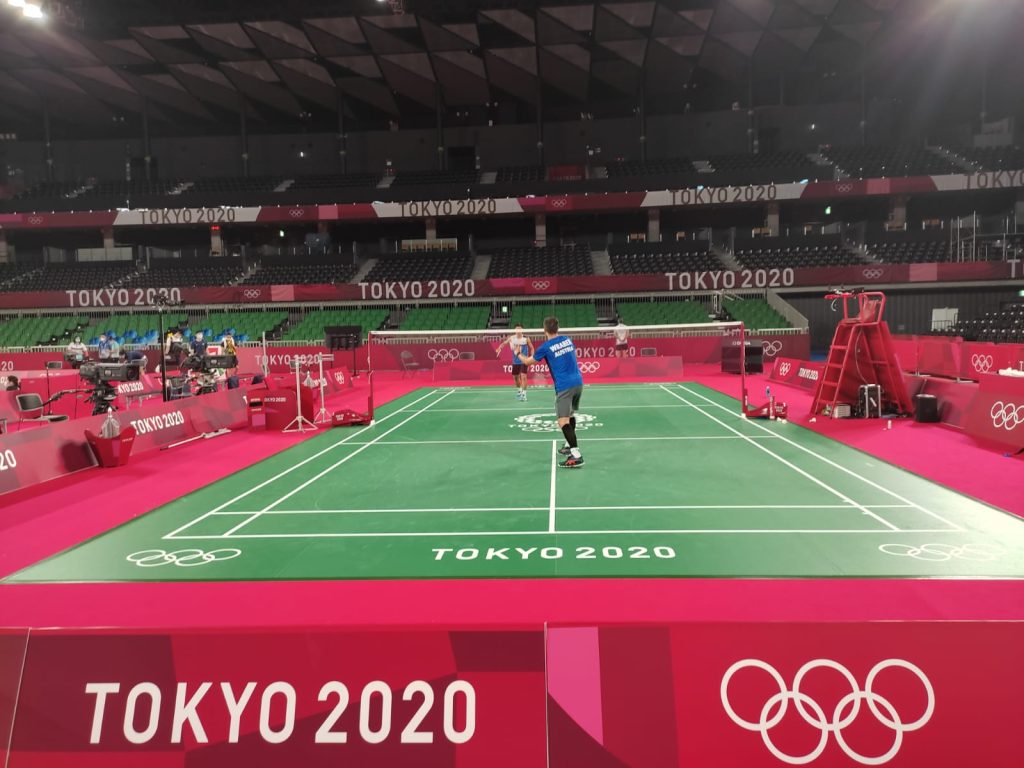
If you’re new to the exciting world of badminton, you’ve embarked on a journey that offers not only physical fitness but also a whole lot of fun! As an experienced badminton player, I’m here to help you understand badminton rules. Whether you’re a beginner or someone looking to brush up on your knowledge, this ultimate guide will equip you with the essentials to enjoy this exhilarating sport to its fullest.
The Basics of Badminton
Court and Equipment
Before we delve into the rules, let’s start with the basics. Picture a rectangular court divided by a net, similar to tennis. The shuttlecock, made of real feathers, is what you’ll be using to play the game. The dimensions of a badminton court may differ in singles and doubles play, so let’s discuss each.

For singles, the court is 13,4 meters long (44 feet) and 5,18 meters wide (17 feet), while for doubles, it’s slightly wider at 6,1 meters (20 feet). The net, positioned at the centre, blocks the shuttlecock from passing through. Speaking of equipment, all you need to play is a racket, a shuttlecock (or shuttle or birdie), a suitable pair of indoor shoes and a backpack or racket bag.
Professional tip: Make sure to invest in a good-quality racket that suits your playing style and skill level. The right racket can significantly impact your performance on the court.
The Objective of the Game
The objective of badminton is straightforward: score points by hitting the shuttlecock over the net and into your opponent’s court. You aim to make it land inside the designated boundaries to win points.
Scoring in Badminton
Now let’s understand badminton rules for the scoring system. The game is played using rally scoring, which means that every rally is an opportunity to score a point. A rally starts when the server serves the shuttle, and it continues until the rally is won or lost.
To win a game, you need to score 21 points, with a margin of at least 2 points. But there’s a twist! If the score reaches 20-all, a „deuce“ is called. In a deuce, the first team to score 2 consecutive points wins the game.
Serving in Badminton
Let’s focus on serving, a crucial part of badminton. The serving rules may vary for doubles and singles play, so pay close attention. When serving, the server must stand inside the designated service area and hit the shuttle diagonally to the opponent’s court. Remember, the serve must be below the waist and the shuttle must pass over the net.
Professional tip: While serving, aim for accuracy and placement. Practice by placing a target on the court and aiming for it consistently. A well-placed serve can put your opponent at a disadvantage and give you the upper hand. As you practice your serves, experiment with different techniques to keep your opponents guessing. A mix of high and low serves can be a valuable addition to your repertoire.
Serving in Singles
The serving dynamics in badminton vary based on the number of points a player has scored. At the beginning of a game, the server starts from the right side of the service court. As the game progresses, if the server has an even number of points, they continue to serve from the right side for the subsequent point. However, if the server has an odd number of points, they switch to serving from the left side of the service court.
Serving in Doubles
The rules for doubles service in badminton are more complex. The basic rule remains the same: the first server starts from the right side of the service court, and after winning an even number of points, continues to serve from the right. After winning an odd number of points, they serve from the left. The receiver stands on the alternate service court, and the team that wins a point becomes the server for the next point. The order of serving is: initial server, partner of the initial receiver, partner of the initial server, initial receiver, and back to the initial server. No player on the receiving side can receive two consecutive services. If a player serves or receives out of turn or from the wrong side, it is a service court error that must be corrected immediately.
Playing a Rally
The Rally’s structure
Now that you’ve got the basics down, let’s step into a rally and understand badminton rules regarding rallies. A typical badminton rally follows a pattern: serve, return, and continue until a point is scored. During a rally, both teams aim to make the shuttle land in the opponent’s court. But remember, if the shuttle lands outside the court boundaries, it’s considered out.
Professional tip: Always stay alert during a rally and be ready to move quickly to reach the shuttle. This agility is crucial to keep the rally going in your favour.
Faults and Lets
Understanding faults and lets is vital to avoid rule violations. Common faults include:

- Serving or receiving out of turn.
- Hitting the shuttle before it crosses the net.
- Carrying the shuttle.
- Touching the shuttle with your body.
- Using a double-hit motion.
If you’re unsure about a specific rule, don’t hesitate to consult an umpire or experienced player. Remember, practice makes perfect, and the more familiar you become with the rules, the fewer faults you’ll commit.
Scoring and Winning a Game
To win a game, you need to reach the score of 21 points. If the score is tied at 20:20 the game continues until one side gains a two-point advantage. However, if the score reaches 29-all, the next point wins the game! In order to win the whole match, two games must be won. If the players have won one game each, a deciding third game is played. In this so-called rubber game, the same rules apply as in the first two games.
Switching Sides and Breaks
Switching sides during a badminton game is an important aspect that ensures fairness and equal playing conditions for both teams. Players switch sides after each game is finished. In the third game, players change ends when the leading team’s score reaches 11 points.
When the leading team’s or player’s score reaches 11 points, there is a 60 second break. A two-minute interval is allowed after each game. During these breaks, players have a chance to catch their breath, rehydrate, and get valuable coaching by their coach.
Doubles vs. Singles
Now let’s discuss the differences in rules between doubles and singles play. In doubles, communication and positioning are key. You and your partner must work as a team, covering specific areas of the court to ensure you don’t leave any openings for your opponents.
Professional tip: Make sure to communicate effectively with your partner and try to anticipate each other’s movements. Call out „mine“ or „yours“ to avoid confusion and ensure you cover your respective sides effectively. This will help you maintain control during the game and increase your chances of winning.
It’s also important to understand the distinction between singles and doubles service regulations. Let’s dive into the details to clarify the serving rules for each.
In singles matches, the service court consists of the front service line, the centre line, the singles side line (inside side line) and the back line (the outermost line at the back)
Now, here’s where it gets interesting. In doubles matches, the service courts have some variations. They are wider because they utilize the outside side line, reflecting the wider nature of the doubles court. Additionally, the service courts are shorter in length, employing the inside back line instead of the very back line. It’s worth noting that the inside back line plays a specific role, solely marking the boundary for doubles service. It doesn’t serve any other purpose on the badminton court.
To summarize, in doubles matches, the four lines that define the service court are the front service line, the centre line, the doubles side line (outside side line) and the inside back line (positioned right before the very back line).
Understanding these distinctions will allow you to navigate the different service courts in both singles and doubles matches effortlessly, ensuring you play by the rules and enjoy the game.
Etiquette and Sportsmanship
Good sportsmanship is essential in badminton. Always respect your opponents and play fair. Shake hands before and after the game, congratulate your opponents on good shots, and maintain a positive attitude throughout.
Professional tip: Never let anger or frustration cloud your judgment on the court. Stay calm, focused, and determined. This will help you perform better and enjoy the game even more.
Conclusion

Congratulations, you’ve now unravelled the rules of badminton! Remember, understanding badminton rules is crucial in enjoying the full experience of this thrilling sport. Practice regularly, seek advice from experienced players or coaches, and most importantly, have fun on your badminton journey. So, grab a racket, hit the court, and let the games begin!